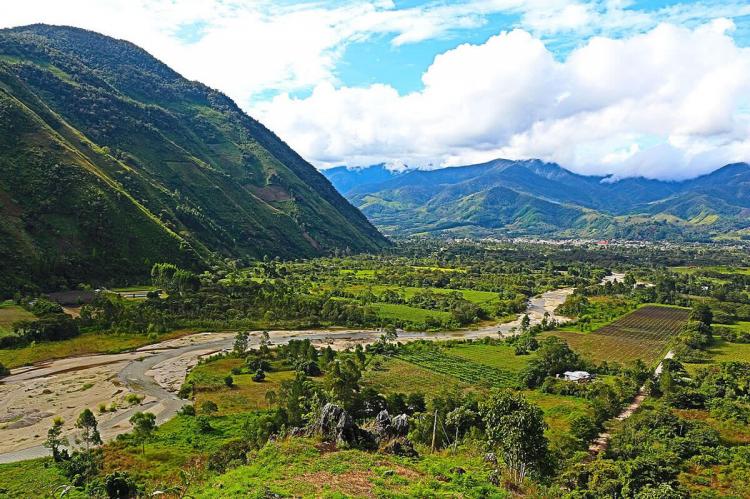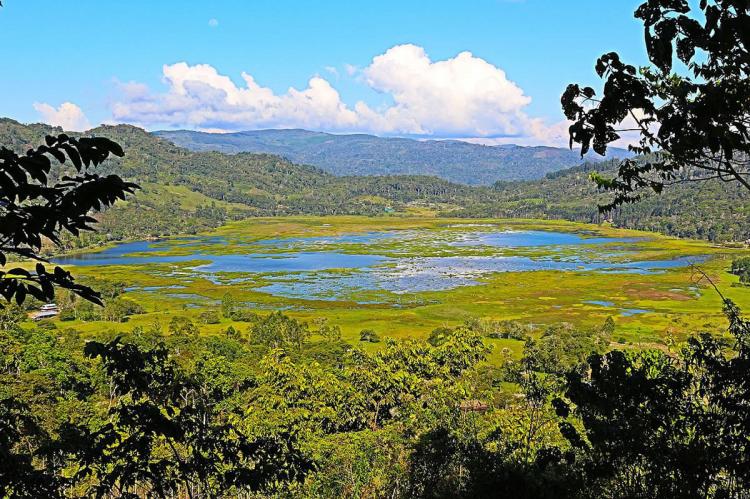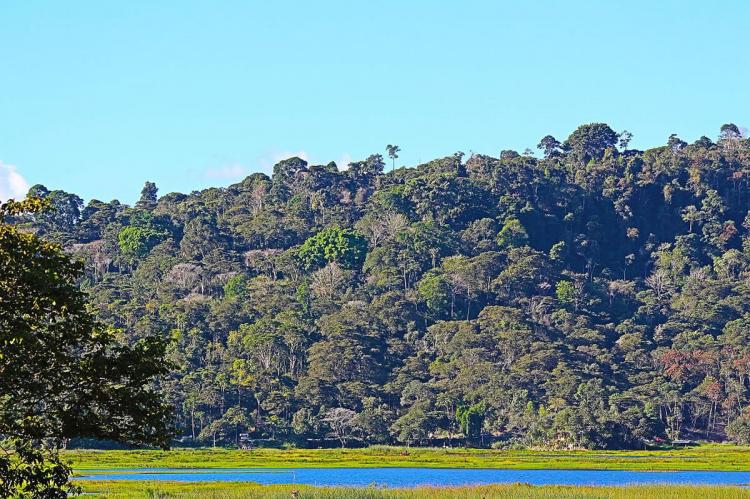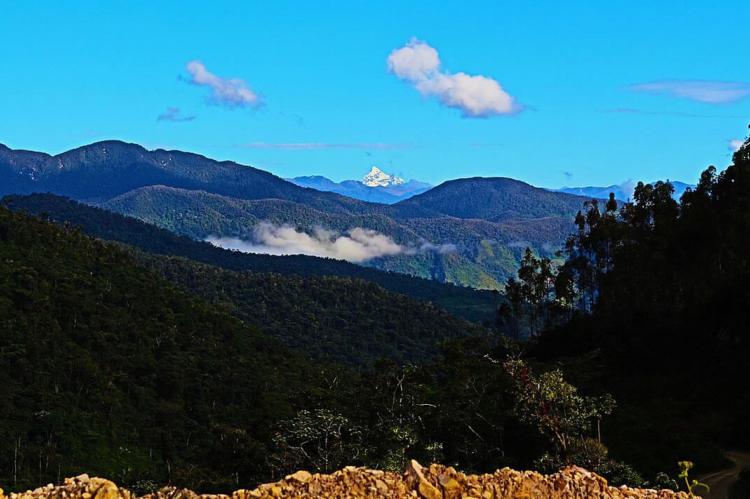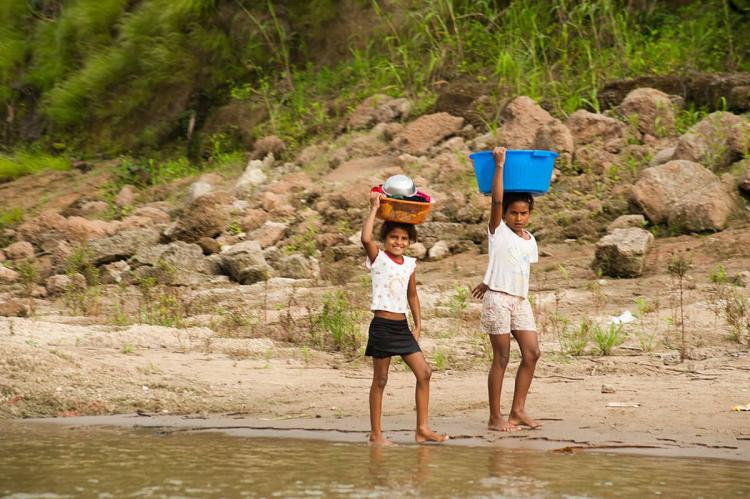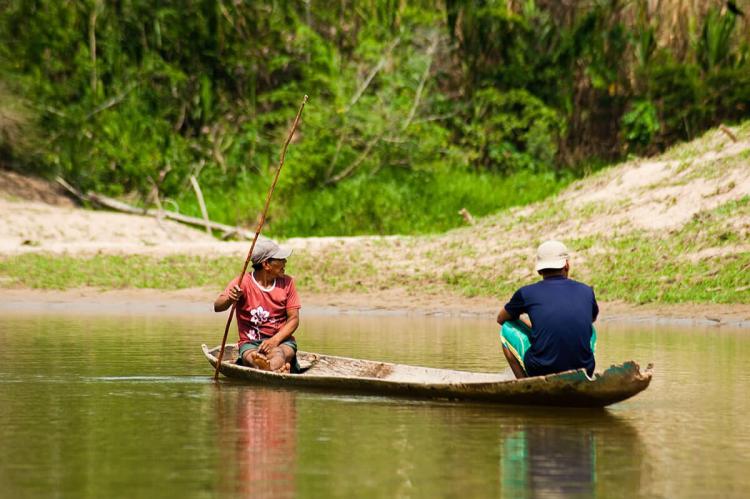Oxapampa-Ashaninka-Yanesha Biosphere Reserve and Yanachaga-Chemillen National Park (Peru)
The Oxapampa-Ashaninka-Yanesha Biosphere Reserve and Yanachaga-Chemillen National Park in central Peru comprise the last undisturbed ecosystems in the central jungle. Its location between the Amazon forest lowland and montane cloud forest results in a high diversity of flora and fauna.
Oxapampa-Ashaninka-Yanesha Biosphere Reserve
The Oxapampa-Ashaninka-Yanesha Biosphere Reserve, in the Department and Region of Pasco in central Peru, consists of the last undisturbed ecosystems on the eastern side of the Peruvian Andes stretching down to the Amazon Basin.
The Biosphere Reserve's location between the Amazon forest lowland and montane cloud forest results in a high diversity and contributes to its high altitudinal range of 300 - 4,500 m (1,000 - 14,700 ft) within the Huaguruncho mountains.
The site, designated as a Biosphere Reserve in 2010, shares its southern border with the Bosques de Neblina-Selva Central Biosphere Reserve and has a total surface area (terrestrial and marine) of more than 1,800,000 ha (4,447,000 acres), broken down as follows:
- Core area(s): 110,658 ha (273,441 acres)
- Buffer zone(s): 1,064,072 ha (2,629,379 acres)
- Transition zone(s): 626,933 ha (1,549,185 acres)
The Oxapampa-Ashaninka-Yanesha Biosphere Reserve represents the Peruvian Upper Amazon Forest region (Tropical Andes) and is situated within the biogeographic province of the Tropical Yungas.
The area has a high concentration of species of fauna and flora of restricted distribution and a wide diversity of transitional zones and regions.
The transition from Amazon low forest and montane cloud forest, with its uneven physiographic characteristics and high rainfall, has resulted in a complex range of flora, including epiphytes, lianas, grasses, shrubs, and trees.
Yanachaga-Chemillen National Park
Yanachaga-Chemillen National Park serves as the core area of the Oxapampa-Ashaninka-Yanesha Biosphere Reserve.
Established in 1986, it aimed to protect the upper watersheds of the Palcazu, Huancabamba, and Pozuzo Rivers, which eventually flow into the Amazon River.
Rainforests and cloud forests occupy almost the entire area of the National Park, except for some high mountain grasslands.
The area is home to several indigenous peoples who have traditionally inhabited the area. For this reason, Yanachaga-Chemillen National Park was designated as the focal area of the Biosphere Reserve.
Flora and Fauna
Nearly 5,000 species of plants have been recorded; among these are approximately 1,400 tree species and 600 orchid species.
Examples of mammal species found within the Reserve include the jaguar (Panthera onca), puma (Puma concolor), Jaguarundi (Puma yagouaroundi), ocelot (Leopardus pardalis), white-lipped peccary (Tayassu pecari), South American tapir (Tapirus terrestris), spectacled bear (Tremarctos ornatus), northern puda (puda mephistophiles), white-tailed deer (Odocoileus virnianus), Andean fox (Lycalopex culpaeus), capybara (Hydrochoerus hydrochaeris), brown woolly monkey (Lagothrix lagotricha), lowland paca (Cuniculus paca), and Molina's hog-nosed skunk (Conepatus chinga).
Examples of bird species found in the area include the Andean cock-of-the-rock (Rupicola peruvianus), harpy eagle (Harpia harpyja), blue-crowned motmot (Momotus momota), quetzal (Pharomachrus sp.), toucan (Ramphastos ambiguus), hoatzin (Opisthocomus hoazín), Amazonian umbrellabird (Ephalopterus ornatus), and blue-grey tanager (Thraupis episcopus).
The frog Ctenophryne barbatula is found only in the Reserve.
Socio-Economic
The Oxapampa-Ashaninka-Yanesha Biosphere Reserve has a population of approximately 87,000 people. It comprises native communities (Yanesha, Ashaninka, and Assheninkas), descendants of European settlers (Austro-German and Swiss), and communities from the Andes, coastal areas, and the Amazonian jungle.
These communities engage mainly in agriculture and livestock rearing, although logging and the development of handicrafts have gained importance in recent years.
Oxapampa is the name given to the province where descendants of European settlers, Andean migrants, and coastal migrants have converged and cohabited with local Yanesha and Ashaninka communities. The present population of the Reserve is approximately 87,000 people.
The Yánesha, Asháninka, and Ashéninka indigenous communities, which number over 8,000, 10,800 and 99 inhabitants, respectively, have lived in the area since immemorial and earned their livelihoods from fishing and hunting in harmony with nature.
Human-induced pressures threatening the Reserve's biodiversity also endanger their way of life as natural resources decline and disaster-related risks increase. Such hazards include landslides, floods, and the intensive use of land and aquatic resources.
In 2013, the Asháninka Association of Integrated and Sustainable Fisheries (APIS), comprised of 20 families from the biosphere reserve, established a laboratory to breed paco fingerlings (Piaractus brachypomus) for consumption and sale.
